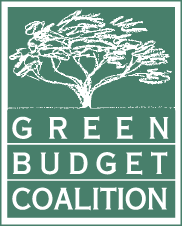In December 2022, Canada hosted the 15th conference of the Parties (COP15) to the United Nations Convention on Biological Diversity (CBD) in Montreal. COP15 landed a historic global agreement to protect nature – the Kunming- Montreal Global Biodiversity Framework (KMGBF). During the conference, Canada committed6 to work with rights holders, provincial and territorial governments and stakeholders to develop a whole-of-government National Biodiversity Strategy and Action Plan to achieve Canada’s targets, including protecting at least 30% of land and ocean by 2030. More and longer-term financial resources from all sources will be needed to implement this strategy and deliver nature-positive outcomes.
The stark realities of climate change and biodiversity loss are increasingly evident across Canada. These deeply intertwined issues pose existential threats to our society, environment, and economy. Studies show that more than half of global GDP, amounting to $44 trillion, depends on nature. The World Economic Forum has identified biodiversity loss and ecosystem collapse as a top global risk.
The biggest direct driver of biodiversity loss globally and in Canada is habitat destruction, with climate change growing in significance. Thus, protecting, managing, and restoring land and ocean ecosystems is key to halting and reversing biodiversity loss. Such actions also contribute to climate change mitigation by safeguarding carbon stored in peatlands, wetlands, forests, grasslands, ocean and coastal ecosystems, and removing carbon dioxide from the atmosphere. These “nature-based solutions” promote environmental resilience, and directly support Canada’s National Adaptation Strategy.
Much of the work to protect, restore and sustainably manage biodiversity hinges on the Government of Canada’s recognition of Indigenous jurisdiction and title, and effective co-management of protected lands and ocean with Indigenous governments, through cooperative federalism. Indigenous-led and co-led conservation and stewardship initiatives offer a pathway to deliver on biodiversity and climate change goals, incorporating traditional knowledge, cultural values, and sustainable practices.
Nature loss and climate change are intrinsically interlinked – a failure in one sphere will cascade into the other. Without significant policy change or investment, the interplay between climate change impacts, biodiversity loss, food security and natural resource consumption will accelerate ecosystem collapse, threaten food supplies and livelihoods in climate-vulnerable economies, amplify the impacts of natural disasters, and limit further progress on climate mitigation.
World Economic Forum Global Risks Report 2023
Permanent financing arrangements—including endowment funds and Project Finance for Permanence—co-designed and managed by Indigenous peoples and institutions, are needed to ensure long-lasting gains, while providing the reliability that Indigenous communities need to embark on ambitious conservation initiatives that uphold their socio-economic and cultural values.
Delivering the transformational change required to effectively tackle the twin crises of biodiversity loss and climate change requires that biodiversity and ecosystem services are recognized and factored into decision-making and investments across governments and society and that public policies and financial flows are aligned with framework goals and targets.
The KMGBF commits Canada to “identify, phase out or reform incentives, including subsidies, harmful for biodiversity…”. This is the single biggest opportunity for catalyzing a nature-positive economy. Current spending on practices that degrade nature far outstrips spending on those that conserve and restore it. Action is urgently needed to identify environmentally harmful subsidies in Canada and to pursue innovations in federal subsidy and tax reform, budgeting and policymaking, and leadership in the expansion of green financial products, to improve coherence between economic and environmental policy, and reorient the flow of public capital to catalyze new nature- positive economic opportunities.
Recommendation:
To deliver on Canada’s nature protection and recovery commitments, the federal government must:
- Invest in long-term financing arrangements to support Indigenous-led and co-led conservation initiatives and partnerships to protect, restore and steward land and ocean ecosystems, and to support provincial/territorial governments, civil society and others to be good partners in this work;
- Increase investment to biodiversity and ecosystem services closer to the level for climate change, sending a clear signal that the climate and biodiversity crises are interdependent, pose significant risk to society, and must be addressed in tandem; and
- Identify, and eliminate or redirect subsidies that harm nature, and realign existing federal funding programs (e.g., infrastructure) to support nature and climate-positive actions.
The Green Budget Coalition has developed a list of priority actions, costing $16 billion over seven years and $1.8 billion annually thereafter—for details, please see Financing Nature Protection and Recovery in Canada – Detailed Recommendations, later in this document.
Even if every recommendation in the Financing Nature Protection and Recovery in Canada – Detailed Recommendations section is implemented, there would be more work to do. Nonetheless, these recommended actions are a tangible start towards ensuring Canada’s diverse and unique species, habitats, and ecosystems are safeguarded for future generations along with the prosperity and economic opportunities that depend on them.
[ECCC, NRCan, DFO, PC, FIN, PCO, TC, AAFC, CIRNAC, ISC, ISED, CFIA, PS, PHAC, HC, PMRA, GAC, StatCan]

